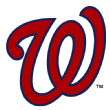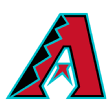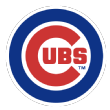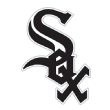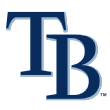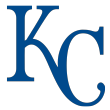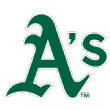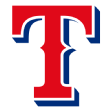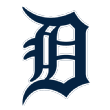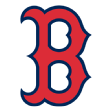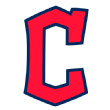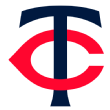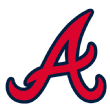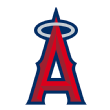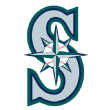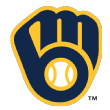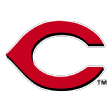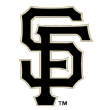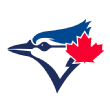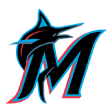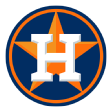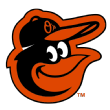New York Knicks: F

Despite Phil Jackson's departure as team president, it's hard to find much to like about the Knicks' offseason. The change at the top, which saw Jackson replaced by Steve Mills and Scott Perry (imported from the Sacramento Kings under Mills), only came after New York drafted Frank Ntilikina over Dennis Smith Jr. -- in large part because of Ntilikina's fit in Jackson's beloved triangle offense. Though Ntilikina was hardly a reach, Smith looks like the steal of the lottery based on his college projections and summer-league performance.
Under Mills' guidance, the Knicks used the vast majority of their cap space on a lavish four-year, $71 million offer sheet to restricted free agent Tim Hardaway Jr., whose production with the Atlanta Hawks didn't merit that kind of deal. New York used its only remaining exception to re-sign backup guard Ron Baker for two years and $9 million, leaving a point guard rotation of Baker, 19-year-old Ntilikina and minimum signing Ramon Sessions.
Orlando Magic: B-

Though it's unlikely to change their fortunes much next season, the Magic had a solid offseason under new management with president of basketball operations Jeff Weltman and GM John Hammond. The one exception was the annual Orlando overpay of a backup point guard, with Shelvin Mack (two years, $12 million) joining C.J. Watson (subsequently waived) and D.J. Augustin (who has three years and $21.75 million left on his deal) as beneficiaries of the Magic's largesse.
A three-year, $18 million deal for wing Jonathon Simmons that is partially guaranteed the final season was a better investment of Orlando's cap space. The Magic also snagged stretch-5 Marreese Speights for the minimum, adding a spacing option in the frontcourt, and got solid value drafting Jonathan Isaac with the sixth pick.
Philadelphia 76ers: B+

After trading up from No. 3 to No. 1 to add Markelle Fultz to their group of potential stars, the Sixers wisely held the line on spending this summer, offering one-year deals in free agency. JJ Redikk ($23 million) and Amir Johnson ($11 million) signed on at above-market rates, bolstering Philadelphia's chances at reaching the playoffs while allowing the 76ers to pursue a younger contributor next offseason.
I do wonder whether the Sixers might have changed plans had they known the Pistons would renounce Caldwell-Pope, making him an unrestricted free agent. But Philadelphia can still sign Caldwell-Pope next summer, and Bradley might be a better fit with the Sixers' young core. Philadelphia still has $15 million left to renegotiate and extend the contract of starting small forward Robert Covington and can also extend center Joel Embiid before he becomes a restricted free agent.
Toronto Raptors: B

Masai Ujiri resisted the desire to break up a successful roster that could contend in a post-LeBron James Eastern Conference. The Raptors re-signed point guard Kyle Lowry at a reasonable rate: three years, $93 million plus incentives. The value wasn't as strong with Serge Ibaka, who got $65 million over three years. Toronto was working under financial limitations with the luxury tax looming, which necessitated jettisoning Joseph and giving up a first-round pick so the Nets would take Carroll.
The money-saving moves allowed the Raptors to use their non-taxpayer midlevel exception on C.J. Miles, a better shooter than Carroll but not the same kind of defender. My big concern is how Toronto will fill the minutes Ibaka doesn't play at power forward. Miles is dramatically undersized for the position, meaning Toronto might be counting on second-year player Pascal Siakam taking a big step forward. How well the Raptors fill those minutes might determine how much they drop off this season, if at all.
Washington Wizards: C

Stop me if you've heard this before, but the Wizards were constrained by the luxury tax this summer. Unlike other East teams that skirted the tax or dodged it entirely, Washington is about $7 million over the tax line with a full roster after matching a max offer sheet from the Brooklyn Nets to starting small forward Otto Porter.
Still, tax considerations led the Wizards to let Bogdanovic walk and replace him with the cheaper Jodie Meeks on a two-year, $7 million deal. I prefer Meeks to Bogdanovic, but Washington could have waited around for one of the shooting guards left on the market, including Gerald Henderson Jr. and Anthony Morrow. Tim Frazier, acquired from the New Orleans Pelicans for a late second-round pick, should upgrade a weak spot backing up John Wall.

Despite Phil Jackson's departure as team president, it's hard to find much to like about the Knicks' offseason. The change at the top, which saw Jackson replaced by Steve Mills and Scott Perry (imported from the Sacramento Kings under Mills), only came after New York drafted Frank Ntilikina over Dennis Smith Jr. -- in large part because of Ntilikina's fit in Jackson's beloved triangle offense. Though Ntilikina was hardly a reach, Smith looks like the steal of the lottery based on his college projections and summer-league performance.
Under Mills' guidance, the Knicks used the vast majority of their cap space on a lavish four-year, $71 million offer sheet to restricted free agent Tim Hardaway Jr., whose production with the Atlanta Hawks didn't merit that kind of deal. New York used its only remaining exception to re-sign backup guard Ron Baker for two years and $9 million, leaving a point guard rotation of Baker, 19-year-old Ntilikina and minimum signing Ramon Sessions.
Orlando Magic: B-

Though it's unlikely to change their fortunes much next season, the Magic had a solid offseason under new management with president of basketball operations Jeff Weltman and GM John Hammond. The one exception was the annual Orlando overpay of a backup point guard, with Shelvin Mack (two years, $12 million) joining C.J. Watson (subsequently waived) and D.J. Augustin (who has three years and $21.75 million left on his deal) as beneficiaries of the Magic's largesse.
A three-year, $18 million deal for wing Jonathon Simmons that is partially guaranteed the final season was a better investment of Orlando's cap space. The Magic also snagged stretch-5 Marreese Speights for the minimum, adding a spacing option in the frontcourt, and got solid value drafting Jonathan Isaac with the sixth pick.
Philadelphia 76ers: B+

After trading up from No. 3 to No. 1 to add Markelle Fultz to their group of potential stars, the Sixers wisely held the line on spending this summer, offering one-year deals in free agency. JJ Redikk ($23 million) and Amir Johnson ($11 million) signed on at above-market rates, bolstering Philadelphia's chances at reaching the playoffs while allowing the 76ers to pursue a younger contributor next offseason.
I do wonder whether the Sixers might have changed plans had they known the Pistons would renounce Caldwell-Pope, making him an unrestricted free agent. But Philadelphia can still sign Caldwell-Pope next summer, and Bradley might be a better fit with the Sixers' young core. Philadelphia still has $15 million left to renegotiate and extend the contract of starting small forward Robert Covington and can also extend center Joel Embiid before he becomes a restricted free agent.
Toronto Raptors: B

Masai Ujiri resisted the desire to break up a successful roster that could contend in a post-LeBron James Eastern Conference. The Raptors re-signed point guard Kyle Lowry at a reasonable rate: three years, $93 million plus incentives. The value wasn't as strong with Serge Ibaka, who got $65 million over three years. Toronto was working under financial limitations with the luxury tax looming, which necessitated jettisoning Joseph and giving up a first-round pick so the Nets would take Carroll.
The money-saving moves allowed the Raptors to use their non-taxpayer midlevel exception on C.J. Miles, a better shooter than Carroll but not the same kind of defender. My big concern is how Toronto will fill the minutes Ibaka doesn't play at power forward. Miles is dramatically undersized for the position, meaning Toronto might be counting on second-year player Pascal Siakam taking a big step forward. How well the Raptors fill those minutes might determine how much they drop off this season, if at all.
Washington Wizards: C

Stop me if you've heard this before, but the Wizards were constrained by the luxury tax this summer. Unlike other East teams that skirted the tax or dodged it entirely, Washington is about $7 million over the tax line with a full roster after matching a max offer sheet from the Brooklyn Nets to starting small forward Otto Porter.
Still, tax considerations led the Wizards to let Bogdanovic walk and replace him with the cheaper Jodie Meeks on a two-year, $7 million deal. I prefer Meeks to Bogdanovic, but Washington could have waited around for one of the shooting guards left on the market, including Gerald Henderson Jr. and Anthony Morrow. Tim Frazier, acquired from the New Orleans Pelicans for a late second-round pick, should upgrade a weak spot backing up John Wall.
